The sinkhole held the remains of animals like early horses, sloths, giant armadillos, and possibly even a new species of tapir.
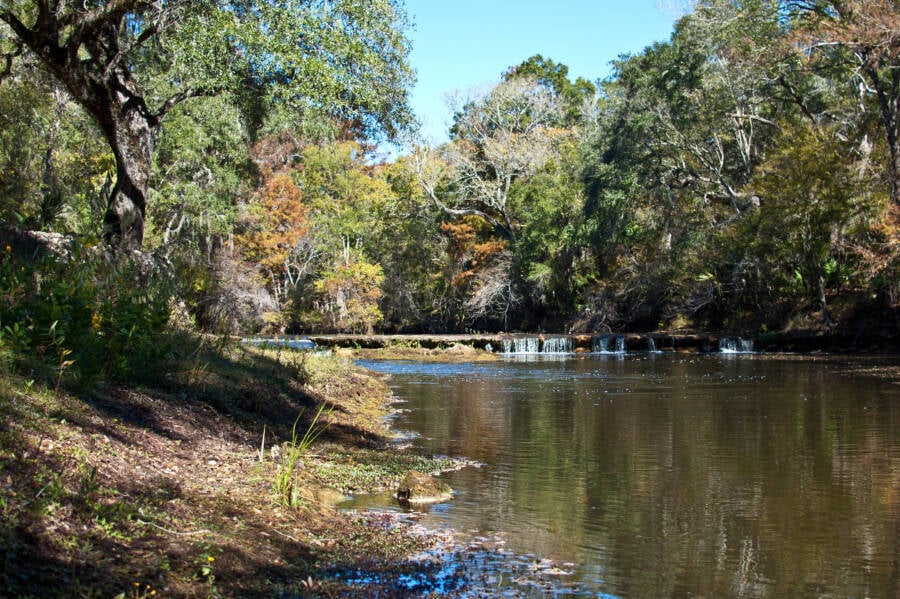
Dorothy Finley/FlickrFlorida’s Steinhatchee River, where 552 prehistoric fossils were pulled from an underwater sinkhole.
Around 500,000 years ago, a sinkhole opened in Florida’s Big Bend region. Hundreds of animals met their deaths in its depths, and their remains were eventually entombed in sediment.
In 2022, two hobbyist fossil hunters diving in the Steinhatchee River stumbled upon this prehistoric graveyard, unearthing more than 500 fossils from creatures like horses, sloths, and giant armadillos. Now, these bones are revealing more about the fauna of Florida half a million years ago.
Divers Discover A Trove Of Fossils In A Steinhatchee River Sinkhole
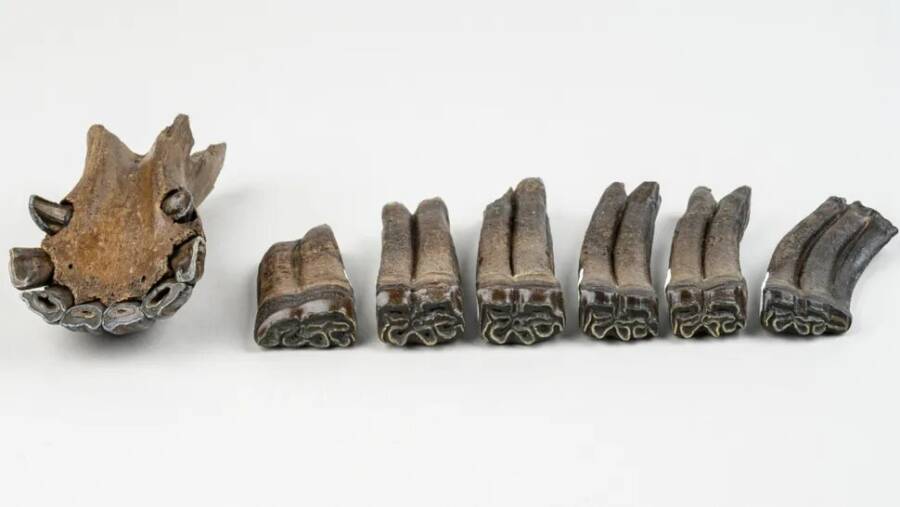
Florida Museum/Kristen GraceFossils from an early horse species that were pulled from the river.
In June 2022, Robert Sinibaldi and Joseph Branin were diving in the Steinhatchee River near Sinbaldi’s property, as they had many times in the past. They were familiar with the murky depths of the water. “It’s like diving in coffee,” Sinibaldi stated in a press release from the Florida Museum of Natural History.
At first, the pair had little luck on their dive. Then, just as they were about to move to a new section of the river, Branin spotted horse teeth protruding from the riverbed. As they searched the area, they uncovered even more fossils, including part of a hoof and a skull.
“When I dropped my gear off, there was a row of horse teeth laying at the waterline right on the bank, exposed by the falling tide. We felt around the waterline with our hands and just below in the shallow water and began finding tons of bones, and getting more excited, however it wasnt until the next day that we dove along that bank we found much of the material eroding out of the boulders and old sinkhole clays, in about 6-8′ of water,” Branin told All That’s Interesting.
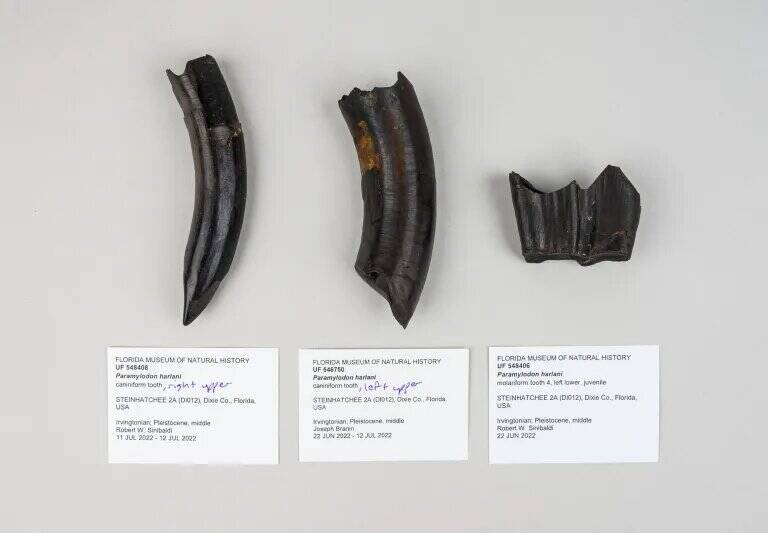
Florida Museum/Kristen GraceThe sinkhole held fossils of giant sloths, like these preserved teeth.
The duo reached out to Dr. Richard Hulbert, the collection manager for the Division of Vertebrate Paleontology at the Florida Museum of Natural History, regarding their findings.
“We emailed Dr. Hulbert, mostly about the abundance of horses. He became much more interested upon seeing that the symphysis was from an earlier subspecies of equus. I knew we wouldn’t get to hold onto the fossils after he said “There’s definitely a paper in this,” Branin explained.
An examination of the fossils revealed that they dated back 500,000 years to a period of the Pleistocene known as the middle Irvingtonian, a little-understood time of evolutionary transition. So, why were they all gathered in a sinkhole beneath the Steinhatchee River?
Horses, Sloths, And Armadillos: The Prehistoric Creatures Preserved Beneath The River
Experts believe that the sinkhole in which the fossils were found formed about 500,000 years ago. The animals whose remains were inside had fallen in and perished in its depths, and over time, their bones were covered with sediment and preserved. Then, as the Steinhatchee River shifted its course over the millennia, its waters eventually covered the sinkhole.
In a study now published in the journal Fossil Studies, researchers from the Florida Museum of Natural History detailed the impressive collection of fossils Robert Sinibaldi and Joseph Branin discovered.
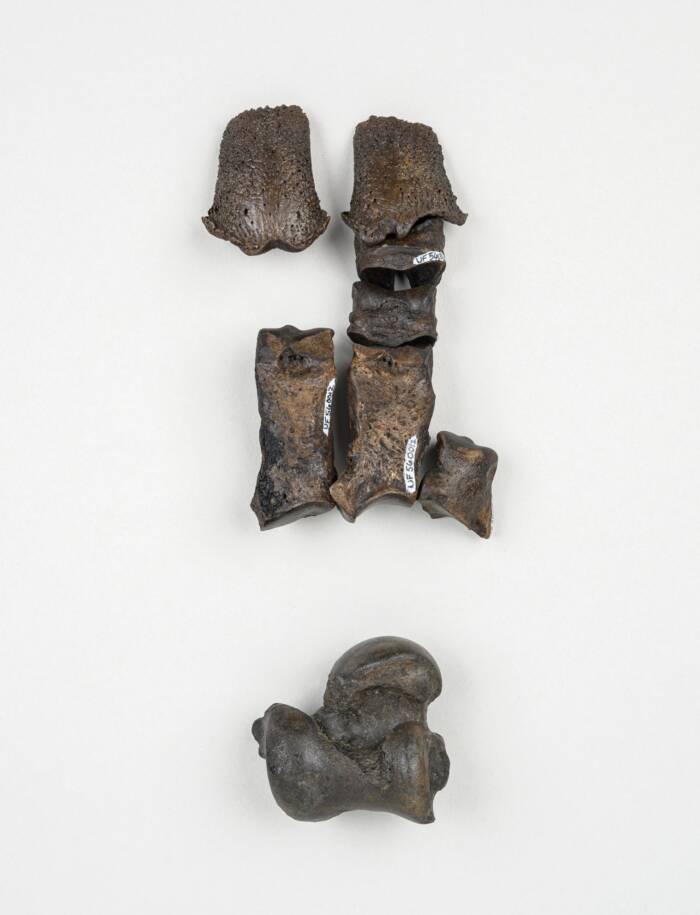
Florida Museum/Kristen GraceGiant armadillo fossils arranged in a partial reconstruction of the animal’s foot.
In total, 552 fossils dating back more than half a million years were pulled from the sinkhole. The specimens included the well-preserved bones of prehistoric animals like early horses, sloths, giant armadillos, and possibly even a new species of tapir.
One of the fossils revealed the massive foot of Holmesina septentrionalis, an armadillo that could reach 475 pounds. Scientists were surprised to see that the foot had features of an earlier, smaller Holmesina ancestor.
“This gave us more clues into the fact that the anatomy kind of trailed behind the size increase,” Rachel Narducci, a vertebrate paleontology collections manager at the Florida Museum, stated in the press release. “So they got bigger before the shape of their bones changed.”
Another key fossil found in the sinkhole was a skull from what may be a previously unknown tapir species. “We need more of the skeleton to firmly figure out what’s going on with this tapir,” Dr. Hulbert, the lead author of the study, stated in the press release. “It might be a new species. Or it always could just be that you picked up the oddball individual of the population.”
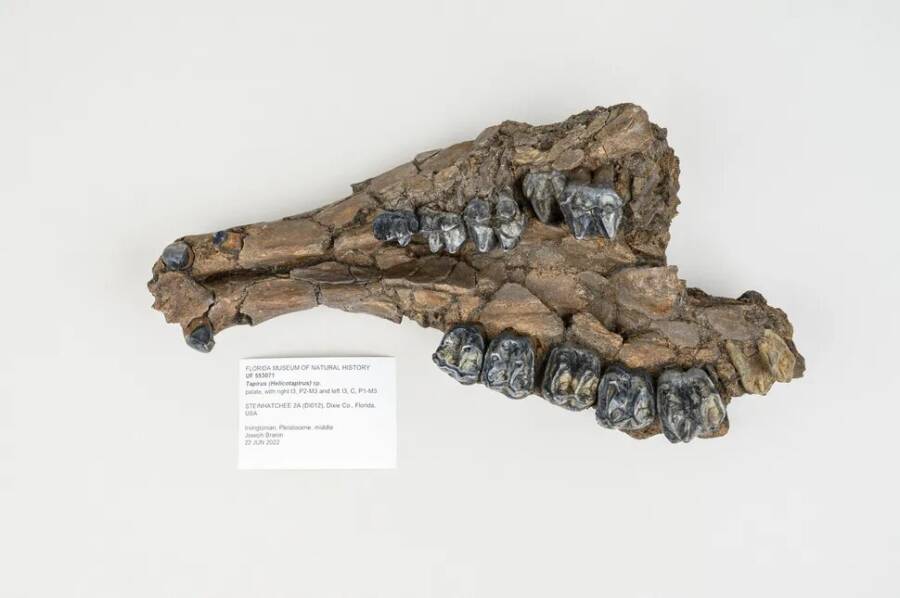
Florida Museum/Kristen GraceA fossil from what may be a new tapir species.
Meanwhile, the overwhelming majority of the fossils belong to an early horse species. Because these animals typically live in grasslands rather than the dense forests that make up the area around Big Bend, researchers believe that this region looked vastly different half a million years ago.
Analysis of the fossils is ongoing, and researchers have plans to return to the Steinhatchee River to collect more specimens in hopes of putting together the missing pieces of Earth’s prehistoric history.
After reading about the fossils found in an underwater sinkhole in Florida, learn about 11 of the most unbelievable prehistoric animals. Then, read about Mexico’s Taam Ja’ Blue Hole, the world’s deepest sinkhole.





